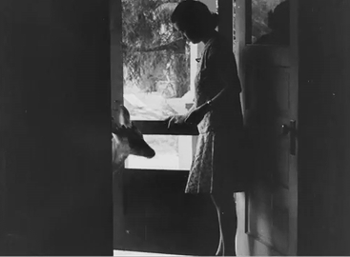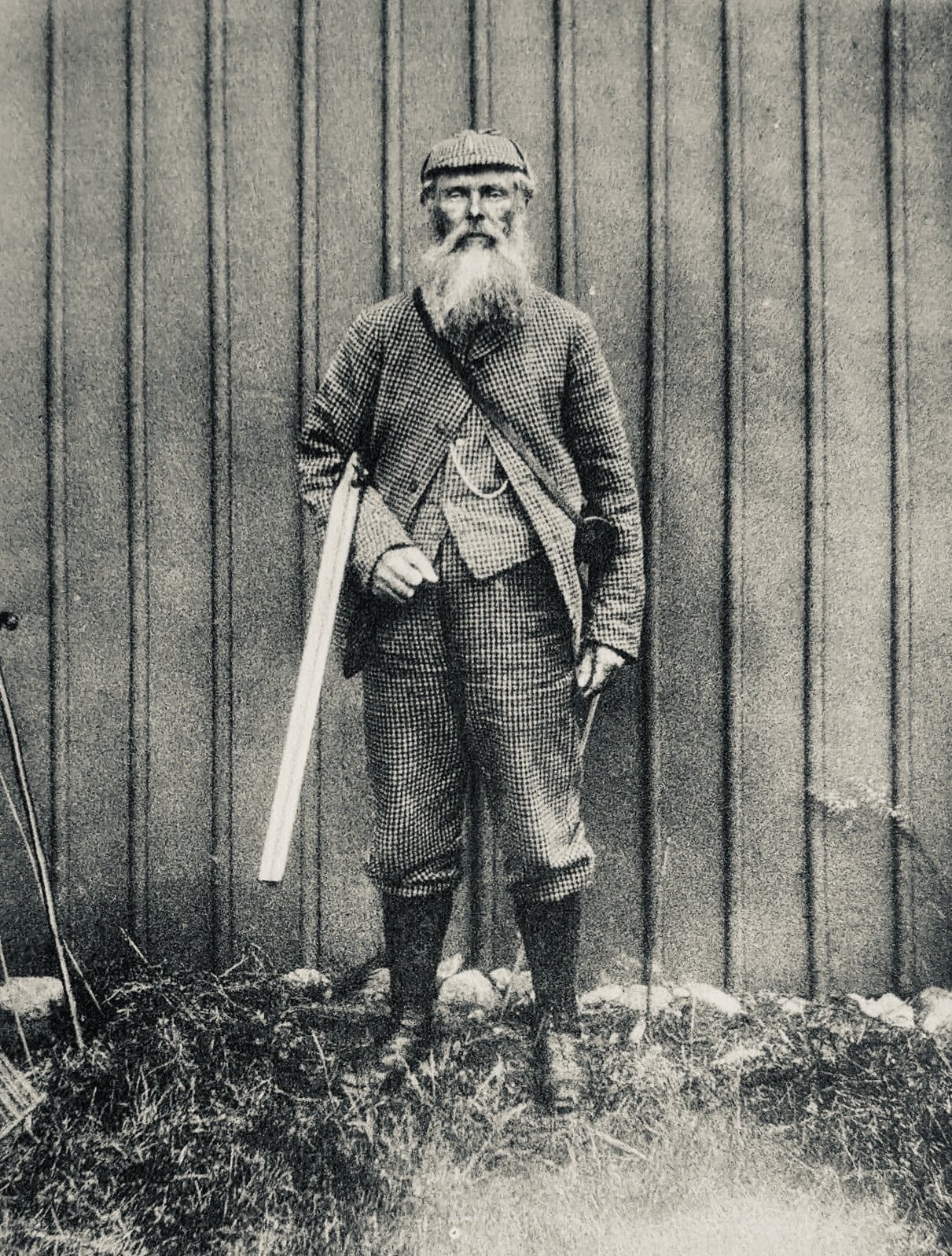From The Splendid Table ...
No one has recorded a better version of this ultimate southwestern French dish, nor is it likely anyone ever will. Paula Wolfert learned it in the dining room of Pierrette Lejanou, a local Toulouse woman known to make the best. This is a three-day project, made more pleasurable if you can collaborate with a friend. The biggest challenges lie in the shopping: in addition to Tarbais beans and duck confit, the dish contains six kinds of pork. It’s an ideal excuse to visit that new nose-to-tail butcher shop that just opened. The staff will be excited to hear you are tackling this and should have most items.The cooking is relatively straightforward. On day one, you lightly cure the pork to enrich its taste. On day two, you make a dense ragout of onions, carrots, beans, and five of the six kinds of pork. The final day, you bake the ragout with the duck confit in a large pot (preferably a traditional clay cassole, see Notes), with the sausages nestled on top. I guarantee you will never forget the results.
I recommend Wolfert's masterpiece, The Cooking of Southwest France.
INGREDIENTS
- 2 pounds dried Tarbais, cannellini, or other runner-type beans
- 1 1/2 pounds fresh ham hock with skin (Wolfert advises against it, but I recommend using smoked hocks)
- 1 pound boneless pork shoulder, trimmed of excess fat and cut into 1-inch (2.5-cm) chunks
- 12 ounces fresh pork skin with ¼-inch (6-mm) layer of hard fat attached
- Flaky sea salt and freshly ground black pepper
- 1/3 cup rendered duck fat
- 2 yellow onions, chopped
- 3 small carrots, cut into rounds 1/4" thick
- 8-ounce piece pancetta (Wolfert advises against it, but I recommend using your favorite thick-cut, smoked bacon, rustically rough-cut)
- 1 head garlic, loose skins removed, plus 4 small garlic cloves, peeled (triple this)
- 1 large Roma tomato, peeled, seeded, and chopped
- Herb bouquet of 4 fresh flat-leaf parsley sprigs, 3 small celery ribs, 2 fresh thyme sprigs, and 1 Turkish bay leaf, tied together with kitchen string
- 2 quarts lightly salted chicken stock
- 6 confit duck legs (procure extra for snacking, this is going to take three days)
- 4 ounces pork fatback
- 1 pound Toulouse or other mild fresh garlicky pork sausages (such as sweet Italian sausage)
- 2 tablespoons fresh bread crumbs
- 2 tablespoons walnut oil
INSTRUCTIONS
Day One:
- Rinse the beans and pick them over to remove any grit.
- In a deep bowl or pot, combine the beans with water to cover by at least 2 inches.
- Let soak in the refrigerator overnight.
- In a shallow dish, sprinkle the ham hock, pork shoulder, and pork skin with ¾ teaspoon salt and 10 grinds of pepper.
- Cover and refrigerate overnight.
Day Two:
- In a saucepan, combine the pork skin with water to cover by 1 inch and bring to a simmer over medium heat.
- Cook until plump and supple, about 15 minutes.
- Drain and let cool.
- Roll up the pork skin, skin side out, and tie securely with kitchen string.
Meanwhile, pat the ham hock and pork shoulder cubes dry with paper towels.
- In an 8- or 9-quart (8- or 9-l) oven-proof stainless steel or enameled cast-iron casserole, heat the duck fat over medium-high heat.
- Add the pork shoulder and cook, turning occasionally, until lightly brown on all sides, about 7 minutes.
- Add the onions and carrots and sauté, stirring, until the onions are soft and golden, about 5 minutes.
Nestle the ham hock and bacon in the casserole and cook, turning occasionally, until browned a little around the edges, about 5 minutes.
- Add the garlic head and tomato and cook, stirring, for 1 minute.
- Add the pork skin and herb bouquet, pour in the stock, and bring to a boil, skimming off any scum that rises to the surface.
- Turn the heat down to low, cover, and simmer gently for 1 ½ hours.
Meanwhile, once the pork ragout has completed its first hour of cooking, start the beans.
- Drain them, then put into a large saucepan.
- Add fresh tepid water to cover by 1 to 2 inches, place on the stove top, and slowly bring to a boil, skimming off any scum that rises to the surface.
- Adjust the heat to maintain a simmer for 3 minutes.
- Drain the beans immediately and add them to the simmering pork.
Re-cover and continue simmering the pork and bean mixture until the beans are tender, at least 30 minutes or up to 2 hours, depending on the age and type of bean. Remove from the heat, let cool, cover, and refrigerate overnight.
Day Three:
Preheat the oven to 325°F (160°C).
- Remove the pork and bean ragout from the refrigerator and skim off any fat that has solidified on the surface, reserving 2 tablespoons.
- Set the ragout over low heat and rewarm to room temperature.
Meanwhile, warm the duck confit to soften the fat.
- If using store-bought duck legs sealed in plastic pouches, submerge the pouches in a large bowl of hot water for 10 minutes or so.
- If using homemade confit, set the legs on a foil-lined sheet pan and rewarm in the oven.
- Pull the duck meat off the bones in large chunks.
- Discard the skin, bones, and any large, dark veins.
- Save any fat for another use.
- Set the meat aside.
When the ragout has come to room temperature, pick out the garlic head(s), separate the cloves, and squeeze each clove to extract the pulp from its skin; return the pulp to the ragout.
- Remove and discard the herb bouquet.
- Pick out the ham hock, discarding bones, large fatty parts, and skin.
- Cut the remaining meat into 1-inch cubes and set aside.
- Pick out and untie the pork skin and cut into 2-inch pieces.
- Place the skin pieces, fat side down to prevent sticking, in the bottom of a 5 ½- to 6-quart cassarole and at least 4 inches deep.
In a food processor, combine the fatback and the 4 garlic cloves and process until pureed.
- Scrape the puree into the ragout and stir until blended.
- Bring the ragout to a simmer over low heat and cook for 30 minutes.
- Remove from the heat.
- Fold in the cubed pork shoulder and bacon.
Using a large slotted spoon or skimmer, add half of the ragout to the prepared casserole in an even layer, letting any excess liquid fall back into the pot.
- Scatter the duck confit on top of the ragout.
- Using the same spoon or skimmer, cover the confit layer with the remaining ragout.
- Taste the ragout cooking liquid and adjust the seasoning if necessary.
- Ladle just enough of the ragout liquid over the ragout to cover it.
- Be sure to leave at least 1 inch of “growing space” between the ragout and the casserole rim.
- Dollop the surface with the 2 tablespoons fat reserved from the chilled ragout.
Transfer the casserole to the oven and bake for 1 1/2 hours.
Meanwhile, prick the sausages in several places.
- In a large frying pan over medium-high heat, cook the sausages, turning them a few times as needed, until browned all over, about 10 minutes.
- Transfer to a plate. Cut larger sausages into 3- to 4-inch pieces.
Remove the casserole from the oven and lower the oven temperature to 275°F.
- Gently break up the skin that has formed on the surface of the beans, being careful not to disturb the layers of confit and pork skin beneath.
- Spacing them evenly, nestle the sausages partway down among the beans.
- Dust the surface of the cassoulet with the bread crumbs.
Return the cassoulet to the oven and bake for 1 hour longer.
- If you like a dark brown crust, raise the heat to 400°F after the first 30 minutes (Highly recommended -Ed.).
- After 1 hour, if the surface is still not browned to your liking, turn on the broiler (make sure the vessel you are using is broiler-safe).
- Broil until richly browned.
Remove the cassoulet from the oven and let rest for 20 minutes.
Just before serving, drizzle with the walnut oil, if using. Ladle onto plates and serve at once, and repeat as needed.
Editors notes:
- Don't pass on the walnut oil. The experience isn't the same without it.
- The Hammock Papers staff found a room-temperature Sauvignon Blanc went well with the first bowl, awakening the tongue after a Sunday afternoon nap. The subsequent servings were accompanied by the high alcohol-content house red, making the spice, smoke, and duck funk really enjoyable.
- Bake some bread.
Thank you, Jessica.

















































































































































No comments:
Post a Comment